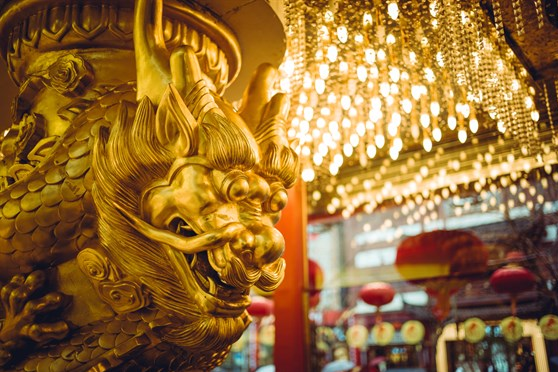China opens its borders to billions of dollars of gold imports

China has given domestic and international banks permission to import large amounts of gold into the country, five sources familiar with the matter said, potentially helping to support global gold prices after months of declines.
China is the world’s biggest gold consumer, gobbling up hundreds of tonnes of the precious metal worth tens of billions of dollars each year, but its imports plunged as the coronavirus spread and local demand dried up.
With China’s economy rebounding strongly since the second half of last year, demand for gold jewellery, bars and coins has recovered, driving domestic prices above global benchmark rates and making it profitable to import bullion.
The local premium is now about $7 to $9 an ounce, according to gold traders in Asia, and would probably have increased further if more imports to satisfy demand had not been allowed.
About 150 tonnes of gold worth $8.5 billion at current prices is likely to be shipped following the green light from Beijing, four sources said. Two said the gold would be shipped in April and two said it would arrive over April and May.
The bulk of China’s gold imports typically comes from Australia, South Africa and Switzerland.
About 150 tonnes of gold worth $8.5 billion at current prices is likely to be shipped following the green light from Beijing
The People’s Bank of China (PBOC), the country’s central bank, controls how much gold enters China through a system of quotas given to commercial banks. It usually allows metal in but sometimes restricts flows.
“We had no quotas for a while. Now we are getting them … the most since 2019,” said a source at one of the banks moving gold into China.
The PBOC did not respond to a request for comment.
The size of the shipments signals China’s dramatic return to the global bullion market. Since February 2020, the country has on average imported gold worth about $600 million a month, or roughly 10 tonnes, Chinese customs data show.
In 2019, its imports ran at about $3.5 billion a month, or roughly 75 tonnes.
China’s absence made little difference to gold prices early in the pandemic when Western investors fearful of economic catastrophe stockpiled vast amounts of the safe-haven asset, pushing it to a record high of $2,072.50 an ounce.
But the investor interest drifted away as vaccines and government stimulus programmes revived economic growth and gold prices have sagged to around $1,750 an ounce.
India’s demand for bullion has also rebounded from a pandemic-induced slump, with record-breaking imports in March of 160 tonnes of gold, an Indian government source told Reuters this month. China and India typically account for some two fifths of the world’s annual demand for gold. Their recovery is “critical in setting the floor for gold” and should stop prices from falling further over the coming months, said Suki Cooper, an analyst at Standard Chartered. Jewellery sales in China during the Lunar New Year holiday in February were stronger than in 2019 and 2020 and manufacturers and retailers needed to replenish their stocks, said Philip Klapwijk at Precious Metals Insights, a consultancy in Hong Kong.
“A pretty decent recovery in gold demand this year will require a generally much higher level of gold imports (than in 2020),” he said.
(By Xiao Han, Peter Hobson, Swati Verma and Arpan Varghese; Editing by Veronica Brown, Shri Navaratnam and David Clarke)
{{ commodity.name }}
{{ post.title }}
{{ post.date }}

Comments